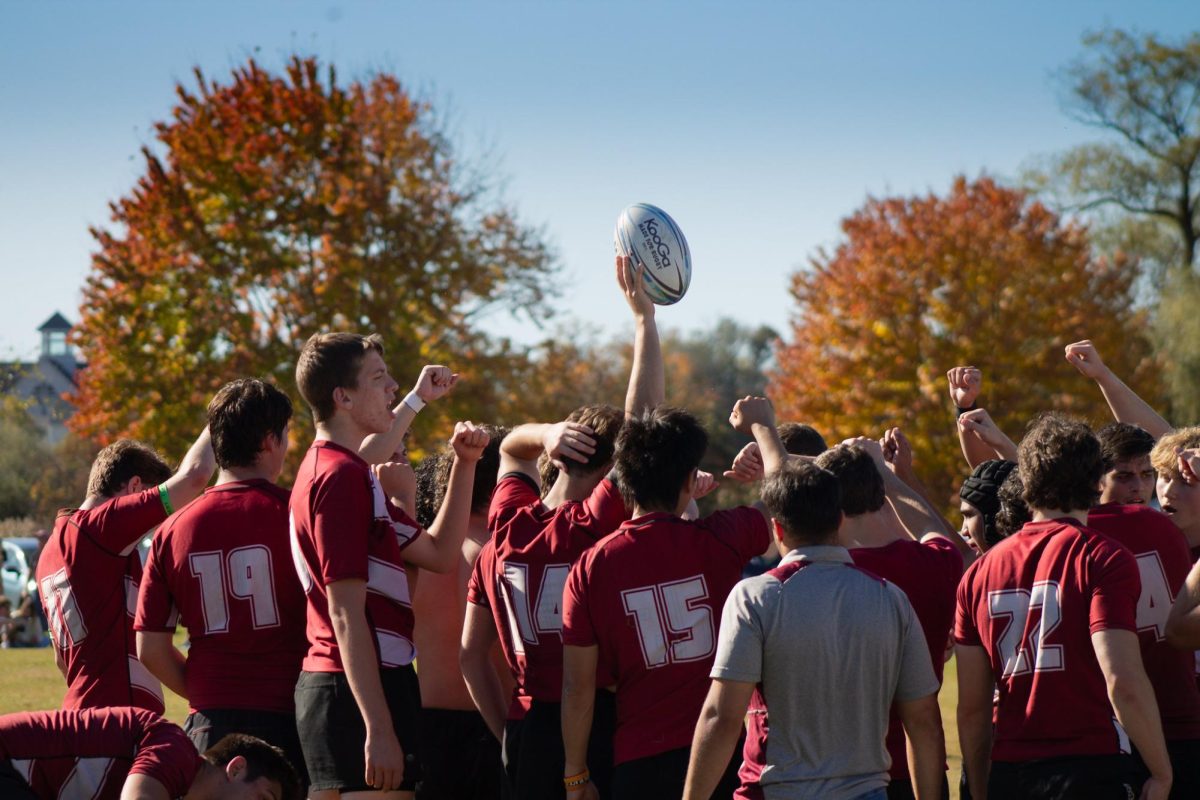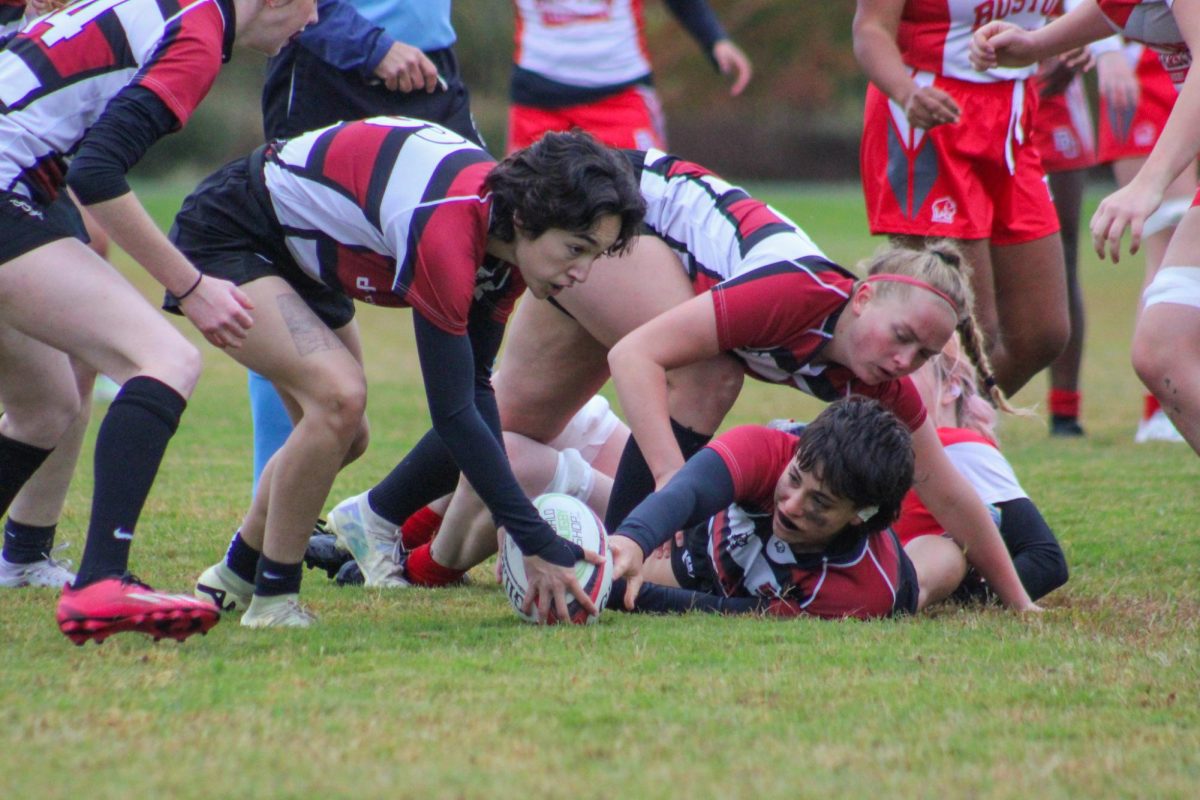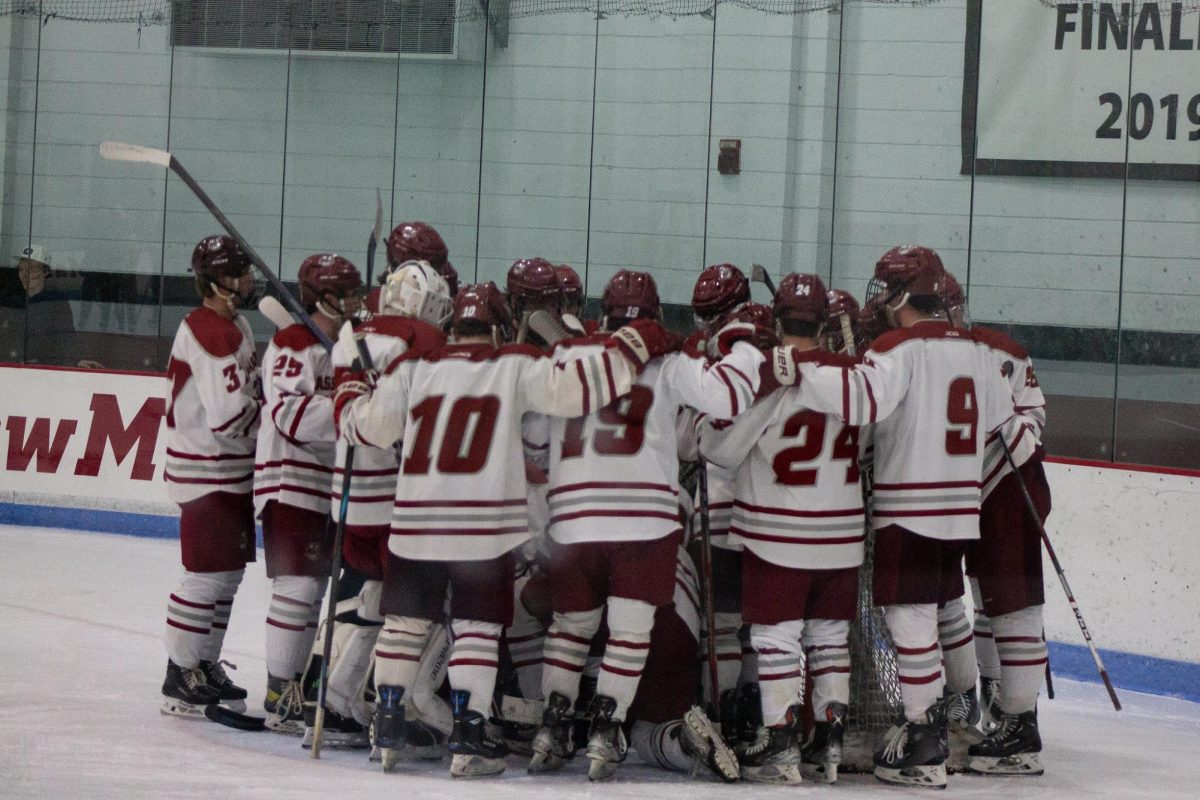Last week, it was revealed that actress Lori Loughlin, otherwise known as Aunt Becky from Full House, paid $500,000 to get her daughters into the University of Southern California. Ironically, one of Loughlin’s daughters, Olivia Jade Giannulli, had posted a YouTube video prior to this information getting out where she stated “[she doesn’t] really care about school.”
This hot new scandal has opened up discussions around how college admissions processes really work and if they are fair or not. At the same time, the demographics for the freshman class at New York City’s top public school were revealed and it became clearer how deep the issue of educational inequity goes. These inequities don’t only exist on a college level, they start in neighborhoods, middle schools and the overuse of test scores to compare students. The conversation about unfair college admissions has deepened into a discussion about how broken and unequal school systems benefit the most privileged members of society from a young age.
Giannulli got into USC by paying her way into a system that already benefits her, and this type of bribery has been going on forever. However, it is Affirmative Action that is at risk because certain Asian Americans are trying to deem it “unfair” in their case against Harvard University. Interestingly enough, the man behind that case isn’t Asian at all – the lawsuit is actually being run by a white man named Edward Blum who has been trying to end Affirmative Action for years.
Nevertheless, what’s really “unfair” is that access to higher education for historically oppressed communities is declining, as seen in the recent reveal that only seven of 895 students accepted to Stuyvesant High School in New York City are Black, a record low for the school. That’s less than one percent.
The problem is not Affirmative Action; the problem is segregated public schools and institutions of lower education that are creating educational gaps at very early ages. New York City public schools are considered the most segregated schools in the country, and segregation can also be seen in Boston schools and among many other cities. Although Black and Hispanic students make up 68 percent of students in the New York City public school system, they make up only nine percent of students in the specialized high school system. The lack of integration and the focus on schools that are predominantly Black and Hispanic is causing an education gap between races at a young age, which is contributing to the correlation between socioeconomic status and race in this country. Diversifying our schools is only the tip of the iceberg. The conversation about the educational gap is about segregation that still exists 50 years after the Civil Rights Act of 1964; we need to talk about integration in our schools.
Affirmative Action should not be eradicated, it should be expanded upon. Affirmative Action is meant to correct past discriminations, but when we still measure children based on standardized testing scores, we are reinforcing discriminatory practices. Collegian columnist Bhavya Pant stated in her article “Time to Rethink Affirmative Action” that “SAT scores aren’t the only thing taken into consideration during the admissions process, but they certainly are the most reliable predictor we have.” She suggests that, because SAT scores are reliable test scores, it’s unfair that Black and Hispanic students can score a 952 and get into the same school as a white or Asian student who scored a 1014 or a 1254.
Pant disregards the fact that the SAT is an inherently racist way of measuring people against each other and with private tutoring being received from a young age, the gap in privilege is being created from early childhood. To consider SAT scores or SHSAT scores “reliable predictors” is to believe that the educational system is created for everyone. In the United States, socioeconomic status is directly tied to race. This correlation runs so deep that Black women are much more likely to die during childbirth than white women. The way institutions impact people in America, with Stuyvesant as an example, shows how race intersects class, status and privilege.
The New York City Specialized High Schools should be about leveling the playing field, closing the gap and giving affordable schooling to students who do not have access to private education. When education systems are leaving students behind and failing entire populations of people, which correlate directly to race, this reflects institutionalized racism. These aren’t minorities, these are large numbers of people who are being marginalized by an education system that was not built with them in mind. Therefore, action must be taken from a younger age. Institutions of higher education are not the only schools that should take measures to increase diversity and be reflective of populations across the United States.
Sonali Chigurupati is a Collegian contributor and can be reached at [email protected].




















NITZAKHON • Mar 26, 2019 at 7:38 am
The author would do well to read Professor Walter E. Williams:
http://www.jewishworldreview.com/cols/williams1.asp
And Dr. Thomas Sowell:
http://www.jewishworldreview.com/cols/sowell1.asp
And Larry Elder:
http://www.jewishworldreview.com/cols/elder1.asp
Before yapping and yipping.
amy • Mar 25, 2019 at 12:59 pm
Lol this article is hilarious it starts out ” Lori Loughlin .. paid $500,000 to get her daughters into the University of Southern California. ”
Then proceed to argue for it’s own version of a corrupt admissions process by affirmative action. The only difference between the recent scandal and affirmative action, is the former involves corruptions by admissions by money and the latter is by government regulation/social pressure. Either way the result is the same, someone got in who didn’t deserve it and took the spot of someone who did deserve to get in.
A Princeton study showed that minorities based on merit except for Asians would only get in the single digits. I have no idea how this author can cry about unfair/rigged admissions in one instance and then argue for them in another instance.
It completely undermines the credibility of his point. It’s simple, if your smart enough and good enough to get into college, then you should get into. All forms of admissions rigging from bribery(legal or illegal) to affirmative action should end.
College is not and should not be some magical gateway for the incapable and losers to get ahead in the world, that makes college basically an enhanced form of welfare. It also diminishes the reputation of college and a degree.
Particularly since so much of it is tax payer supported and those who aren’t intelligent enough to get into college on their merit, in the real world will fail as well once they graduate. Rigging admissions for the stupid isn’t going to magically make them smarter 4 years later. If you want to help out the bottom of society, then go with job training programs. Not something that is beyond their capability and cost hundreds of thousands of dollars. That is an extreme waste of resources and as you already statistically determined, those who by their actions or otherwise are doing worst than the norm. It wouldn’t be rational to waste such a tremendous amount of resources on them as they will likely waste them in the future.
Chien Kwok • Mar 25, 2019 at 11:12 am
I am a person of color and parent of children in a majority low-income and Hispanic NYC public school and a graduate of Brooklyn Technical HS, one of the original specialized high schools (SHS). When I went to Tech in the 80s, it was majority black and Hispanic. We all passed the SHSAT with little or no extra prep. We just studied. I made friends from different racial groups and loved Tech’s diversity. I find it upsetting that the SHS have over the past 20 years lost its diversity. However, to truly resolve this issue, we need to dig beyond the headlines, look past politicians like Mayor deBlasio blaming a politically weak minority group for his failures, and look at the facts of what has happened in the past 20 years and in more recent times.
Through the 1970s to 1990s, there were, in almost every school, a gifted, honors or Special Progress class to give faster learners and academically motivated children their own grouping to teach them at a faster pace and in more advanced topics than that of their peers. These programs were also in schools located in predominantly black and Hispanic neighborhoods and gave their children the academic rigor to handle the advanced math and other subjects at the specialized high schools. As a result, during that period, more than 50% of Brooklyn Tech students were black or Hispanic, peaking at nearly 65% in the early 80s. Bronx High School of Science had over 20%; Stuyvesant High School had over 10% over the same period. This NY Post article talks about this: https://nyp.st/2Jyxohf.
What happened?
During the 90’s there was a shift in education thinking where “reformers” didn’t believe in separating children by learning ability so they lumped students of all abilities together. There may be some benefits for slower learners and special needs students. But the faster learners would have to take a back seat to the median. These gifted, honors and SP programs were mostly wiped out especially in black and Hispanic neighborhood schools.
What remains of the Gifted & Talented program is in only 86 schools and around 2800 seats spread across the city of one million public school students. Parents have to sign up their children to take the G&T test starting as young as age four. If they qualify they can apply to a specified set of schools offering G&T depending on the score. Instead of being tested automatically, parents have to be engaged to first know about the program and then take the time to navigate the testing and application process. This results in low testing and application rates among black and Hispanic children. And even if they get in, the schools offering G&T may be in another district or borough, making it difficult for many families.
Another thing that happened was class sizes grew larger and larger. NYC parents even sued NY State government over this issue and also for a significant amount of school funding. The court ruled in favor of the parents and said class sizes need to be smaller and the state owed NYC $4BN. As you can guess, NYC government ignored this ruling and class sizes kept growing. And the state never paid NYC the $4BN.
With ever larger class sizes with students of all abilities mixed in with one lone teacher teaching, something had to give.
Further mismanagement of education by NYC Mayor DeBlasio led to poor academic outcomes for black and Hispanic students overall from K-12. We can see a proxy of this in the state grade 3-8 math and English test scores where 65-80% of black and Hispanic students have been failing year over year. The most recent test was made easier and every racial group saw a bump up (see p. 6-7 of state test scores of NYC public school students. Using a scale from 1-4, proficiency means either 3 or 4. Failing is 1-2. ):
https://infohub.nyced.org/docs/default-source/default-document-library/2018-math-ela—public—9-26-2018.pdf
Mayor DeBlasio embarked on a $780MM School Renewal program meant to improve education. After several years running it, it closed down last year with little improvement to show for it. See: https://nypost.com/2019/02/26/de-blasio-cancels-embattled-high-costing-renewal-school-program/
There are over one million students in NYC public schools. If 80% of the black/Hispanic students, who are 68% of all students, are failing math and ELA, that is over 500,000 students who are not proficient at grade level math and English. How can they successfully take the SHSAT test, which tests high school level math that isn’t taught in most public middle schools?
But because black and Hispanic parents care about their children’s education, they turned to charter schools like Success Academy. These schools are tough on discipline but stressed academics. Many of these schools are more than 95% black and Hispanic. And now, in a complete reversal, over 90% of these students are passing the state tests. Charter students tend to go on to charter high schools and not apply to take the SHSAT and go to SHS. Find the NY State education department data for NYC charter school test results here: https://infohub.nyced.org/reports-and-policies/citywide-information-and-data/test-results
High performing black and Hispanic students are also heavily recruited by $50,000 a year private schools on scholarships because they want to increase their diversity. This also lowers the number taking SHSAT.
Besides the 8 specialized high schools, there are also high quality “screened” public high schools where a good percentage of blacks/Hispanics attend. They look at grades and state test results as part of a “holistic” admissions process. For example, Beacon High School, a top rated school, is 33% black/Hispanic and 50% white.
The solution?
Contrary to what the headlines suggest, NYC specialized high schools were once highly diverse. Many things changed that caused this to happen. But having an entrance test never changed.
We need to reduce class sizes, increase & properly manage resources to raise academic outcomes for black and Hispanic students, test all children for giftedness, bring back gifted, honors and SP programs in all schools, build more high schools like specialized high schools, including those with alternative entrance requirements, that offer academic challenge and excellence to meet the needs of all high achieving students regardless of race.
But it will take time. We cannot undo in one day the damage done over 20 years. We need advocates and supporters who understand the root causes and not just the headlines written by a biased media that wants more eyeballs.
And finally we cannot be misled by cynical and corrupt politicians like Mayor DeBlasio who are trying to cover up their failures by demonizing one racial group and dividing the community while failing to improve overall education for all New Yorkers.
Steve Gambone • Mar 25, 2019 at 8:50 am
Let’s correct the factual errors presented.
The SHSAT was demonstrated to be a reliable predictor in the 2013 study paid for by New York City.
The number of Black students applying to the specialized schools and taking the SHSAT has been declining for years.
The Black student application rate to the specialized schools is half that of Asian students and has been so for the past five years.
Asian students ALWAYS outnumber Black students in applying to the specialized schools despite Asians being far outnumbered by Blacks in the student population as a whole.
Private schools such as Dalton are awash with cash and private schools are scooping up top notch Black talent at a record rate. But the same schools do not scoop up Asian talent.
Black student All-Stars never apply to the specialized schools ‘cuz they have better options than Asians.
The Black community never sends its All-Stars to the SHSAT. They only send their minor league competitors.
Meanwhile, the Asian community has no other option but to send their Major League All-Stars to the SHSAT competition.
And that’s only the short list of facts and corrections.